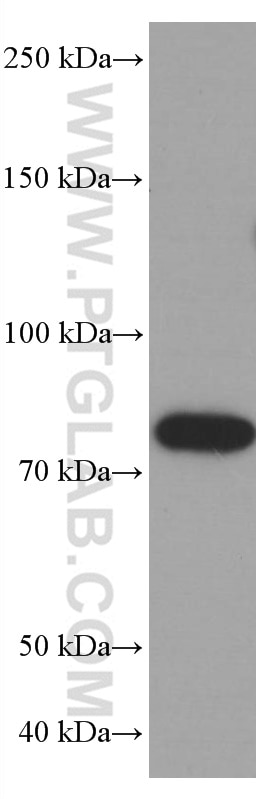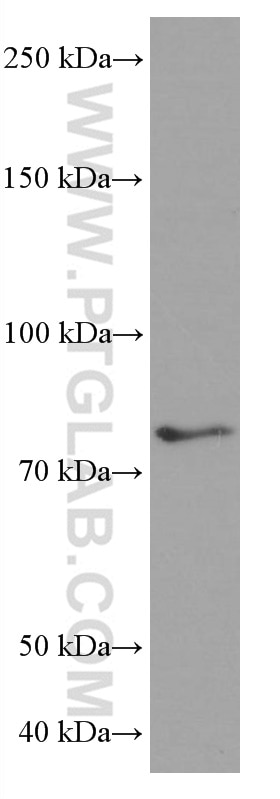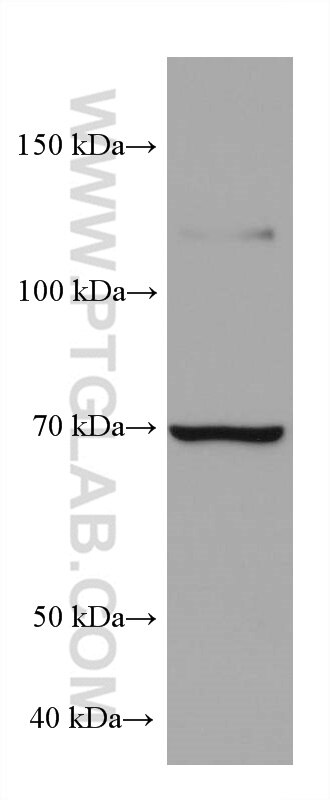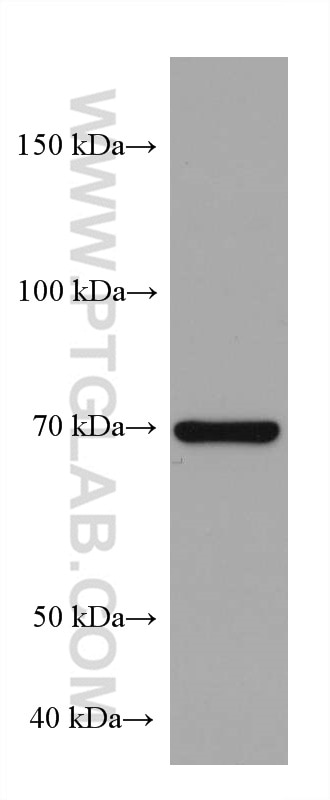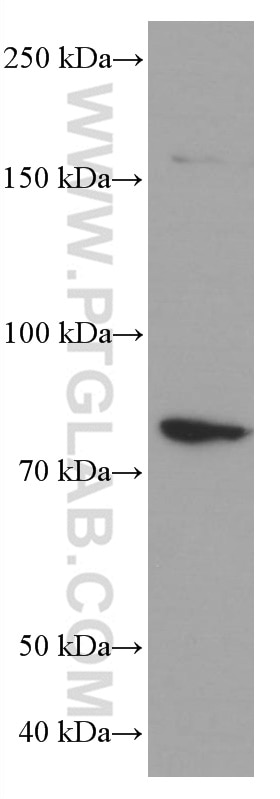Tested Applications
| Positive WB detected in | Ramos cells, Raji cells, Daudi cells, HeLa cells, THP-1 cells, human testis tissue |
Recommended dilution
| Application | Dilution |
|---|---|
| Western Blot (WB) | WB : 1:2000-1:10000 |
| It is recommended that this reagent should be titrated in each testing system to obtain optimal results. | |
| Sample-dependent, Check data in validation data gallery. | |
Published Applications
| WB | See 4 publications below |
| IF | See 1 publications below |
Product Information
66672-1-Ig targets PLZF in WB, IF, ELISA applications and shows reactivity with human, rat samples.
| Tested Reactivity | human, rat |
| Cited Reactivity | mouse |
| Host / Isotype | Mouse / IgG1 |
| Class | Monoclonal |
| Type | Antibody |
| Immunogen |
CatNo: Ag25180 Product name: Recombinant human PLZF protein Source: e coli.-derived, PET30a Tag: 6*His Domain: 101-400 aa of BC026902 Sequence: DLLYAAEILEIEYLEEQCLKMLETIQASDDNDTEATMADGGAEEEEDRKARYLKNIFISKHSSEESGYASVAGQSLPGPMVDQSPSVSTSFGLSAMSPTKAAVDSLMTIGQSLLQGTLQPPAGPEEPTLAGGGRHPGVAEVKTEMMQVDEVPSQDSPGAAESSISGGMGDKVEERGKEGPGTPTRSSVITSARELHYGREESAEQVPPPAEAGQAPTGRPEHPAPPPEKHLGIYSVLPNHKADAVLSMPSSVTSGLHVQPALAVSMDFSTYGGLLPQGFIQRELFSKLGELAVGMKSESR Predict reactive species |
| Full Name | zinc finger and BTB domain containing 16 |
| Calculated Molecular Weight | 673 aa, 74 kDa |
| Observed Molecular Weight | 75 kDa |
| GenBank Accession Number | BC026902 |
| Gene Symbol | PLZF |
| Gene ID (NCBI) | 7704 |
| RRID | AB_2882026 |
| Conjugate | Unconjugated |
| Form | Liquid |
| Purification Method | Protein G purification |
| UNIPROT ID | Q05516 |
| Storage Buffer | PBS with 0.02% sodium azide and 50% glycerol, pH 7.3. |
| Storage Conditions | Store at -20°C. Stable for one year after shipment. Aliquoting is unnecessary for -20oC storage. 20ul sizes contain 0.1% BSA. |
Background Information
PLZF, also named as Zinc finger protein 145, is a 673 amino acid protein, which belongs to the krueppel C2H2-type zinc-finger protein family. PLZF is expressed in bone marrow, early myeloid cell lines and peripheral blood mononuclear cells. PLZF may play a role in myeloid maturation and in the development and/or maintenance of other differentiated tissues.
Protocols
| Product Specific Protocols | |
|---|---|
| WB protocol for PLZF antibody 66672-1-Ig | Download protocol |
| Standard Protocols | |
|---|---|
| Click here to view our Standard Protocols |
Publications
| Species | Application | Title |
|---|---|---|
J Hazard Mater Prenatal and postnatal exposure to polystyrene microplastics induces testis developmental disorder and affects male fertility in mice | ||
iScience Chromodomain helicase DNA-binding domain 2 maintains spermatogonial self-renewal by promoting chromatin accessibility and mRNA stability | ||
Med Microbiol Immunol Effects of acetate-producing Blautia wexlerae on oxidative stress and NLRP3 inflammasome in obesity-associated male infertility | ||
Biomed J Autophagy-induced osteoblast-derived exosomes maintain bone formation and prevent osteoporosis by remodeling gut microbiota-metabolism |

